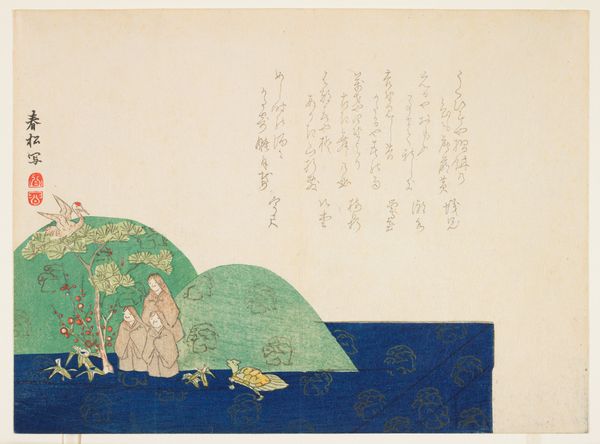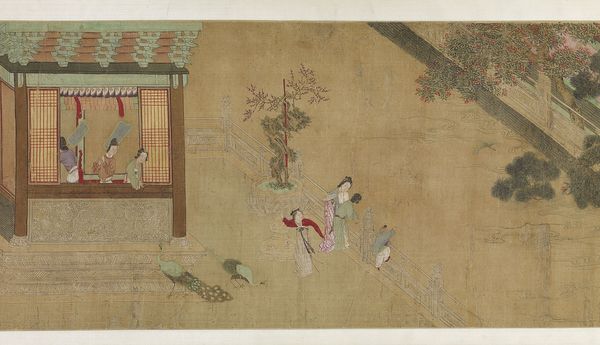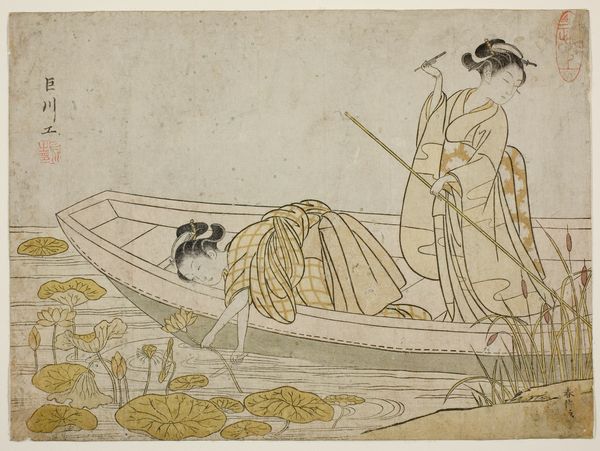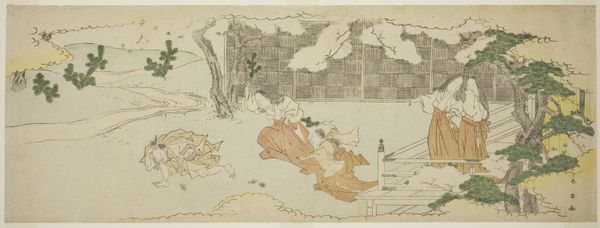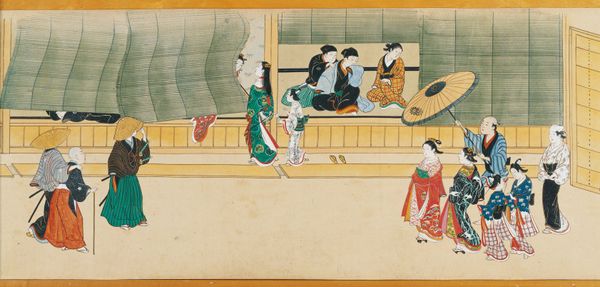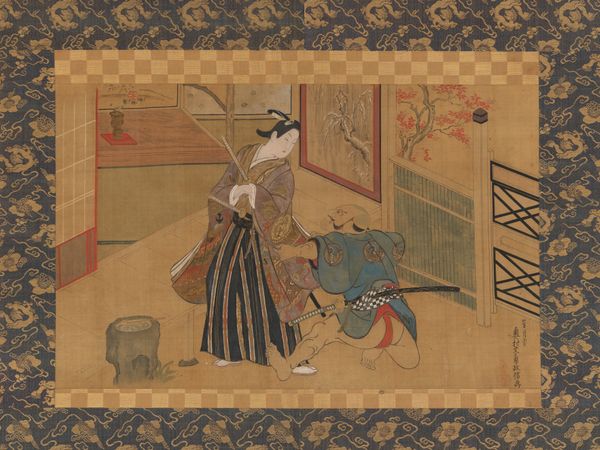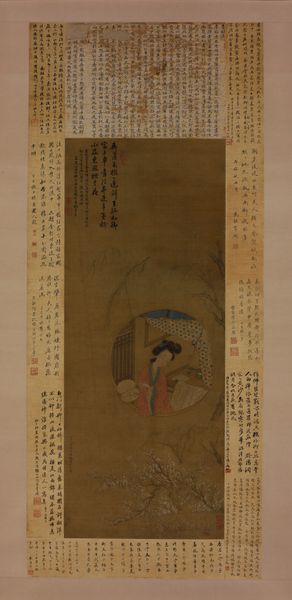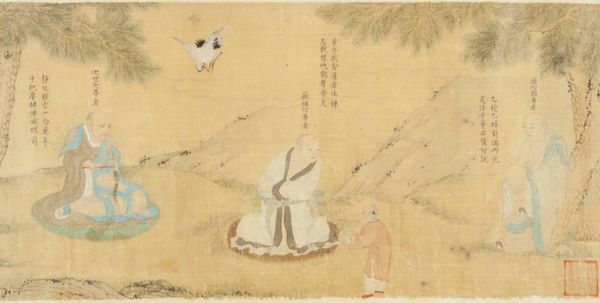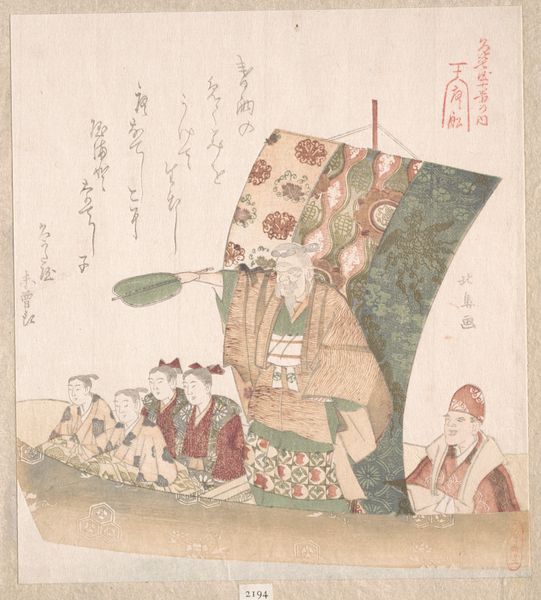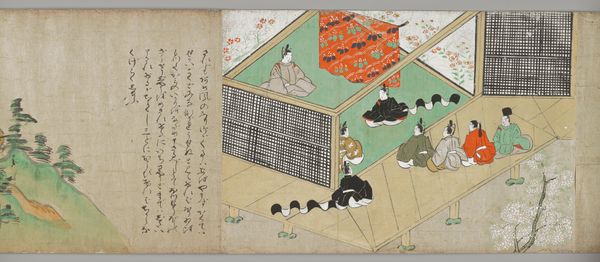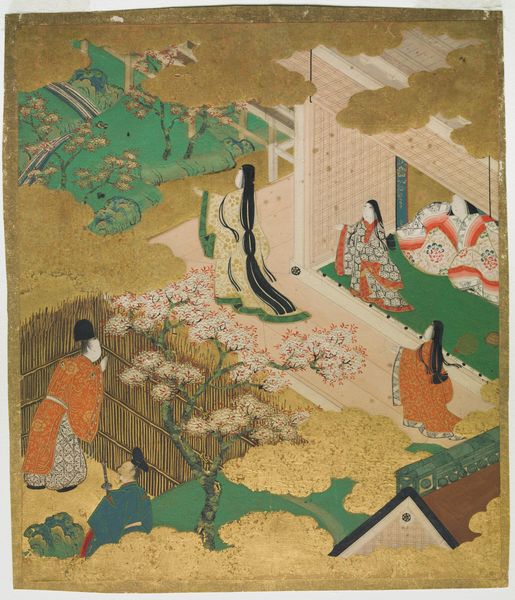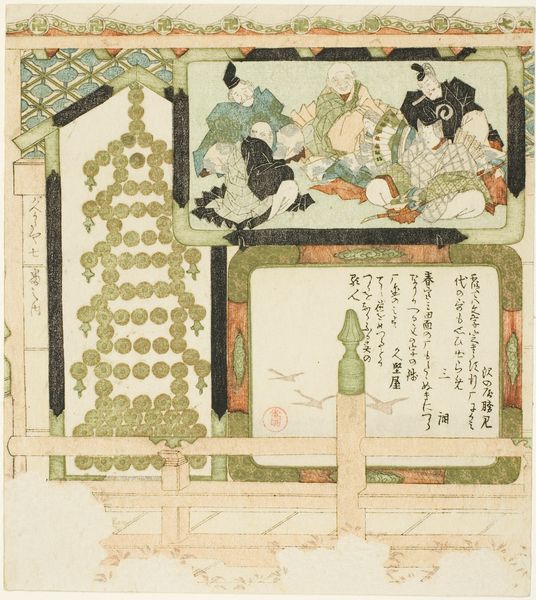![The Tenjin Shrine Scrolls [one of a pair] by Tosa School](/_next/image?url=https%3A%2F%2Fd2w8kbdekdi1gv.cloudfront.net%2FeyJidWNrZXQiOiAiYXJ0ZXJhLWltYWdlcy1idWNrZXQiLCAia2V5IjogImFydHdvcmtzLzMyZDYwNzA2LWRlNmMtNDQ1NS05NTNhLTJkMjU3ZTYxYWM4Yy8zMmQ2MDcwNi1kZTZjLTQ0NTUtOTUzYS0yZDI1N2U2MWFjOGNfZnVsbC5qcGciLCAiZWRpdHMiOiB7InJlc2l6ZSI6IHsid2lkdGgiOiAxOTIwLCAiaGVpZ2h0IjogMTkyMCwgImZpdCI6ICJpbnNpZGUifX19&w=3840&q=75)
The Tenjin Shrine Scrolls [one of a pair] c. early 17th century
0:00
0:00
painting, paper, watercolor, ink
#
portrait
#
water colours
#
narrative-art
#
painting
#
japan
#
paper
#
watercolor
#
ink
#
coloured pencil
#
genre-painting
#
mixed media
#
watercolor
Dimensions: 10 3/16 × 251 7/16 in. (25.88 × 638.7 cm) (image)15 × 284 5/8 in. (38.1 × 723 cm) (including roller bar/oshedake)
Copyright: Public Domain
Editor: We're looking at "The Tenjin Shrine Scrolls," made by the Tosa School around the early 17th century. They’re ink, watercolors, and colored pencil on paper. There’s such an interesting sense of formality here. How do you interpret the figures’ placement within the architectural space? Curator: The scrolls offer a window into the evolving social function of art in Japan during this period. Notice how the figures are depicted within what seems like a private or enclosed setting, perhaps a domestic space associated with the shrine itself. How do you think that shapes the viewer's experience and understanding of Tenjin? Editor: I suppose seeing them in a seemingly mundane, even private setting humanizes them a bit, bringing them closer to the everyday lives of the viewers. Curator: Precisely! And the emphasis on domestic architecture also signals the patronage and the shift of artistic expression. Prior to this period, much religious art production occurred in religious settings, often directed at aristocratic audiences. The appearance of a deity represented within these kinds of "everyday" places, is indicative of Tenjin’s popularity broadening to new classes. Considering this shift in patronage, what kind of statement do you think this pairing of the "divine" and the "everyday" makes? Editor: It suggests an increasingly integrated relationship between religion, everyday life, and even politics as a display of status and personal belief? Curator: Exactly. This kind of integration underscores the shrine’s socio-political power and helps illustrate how such institutions become central in people’s personal lives. What did you make of the pairing? Editor: Thinking about it now, juxtaposing the earthly with the divine helps viewers navigate both worlds, giving us a language for interpreting daily life as infused with the sacred, especially as new artistic schools emerged during this era. Curator: Indeed. Seeing this from a social and cultural angle enriches our understanding and demonstrates how art shapes social experience and how cultural values affect artwork in society.
Comments
minneapolisinstituteofart about 2 years ago
⋮
Sugawara Michizane (845-903) was a celebrated statesman and scholar during Japan's classic Heian period. In order to undermine Michizane's reputation, his rivals at court falsely accused him of plotting to kill the emperor. As a result, he was exiled to the island of Kyushu where he eventually died. Later, several calamities at court were attributed to Michizane's vengeful spirit. Here, Michizane is shown as the god of thunder in the clouds above. His rage causes the courtiers who conspired against him to be struck by lightning. In order to placate Michizane's ghost, the emperor deified him as the Shinto god Tenjin (Heavenly Being) and dedicated shrines to him in Kyoto and Kyushu.
Join the conversation
Join millions of artists and users on Artera today and experience the ultimate creative platform.
